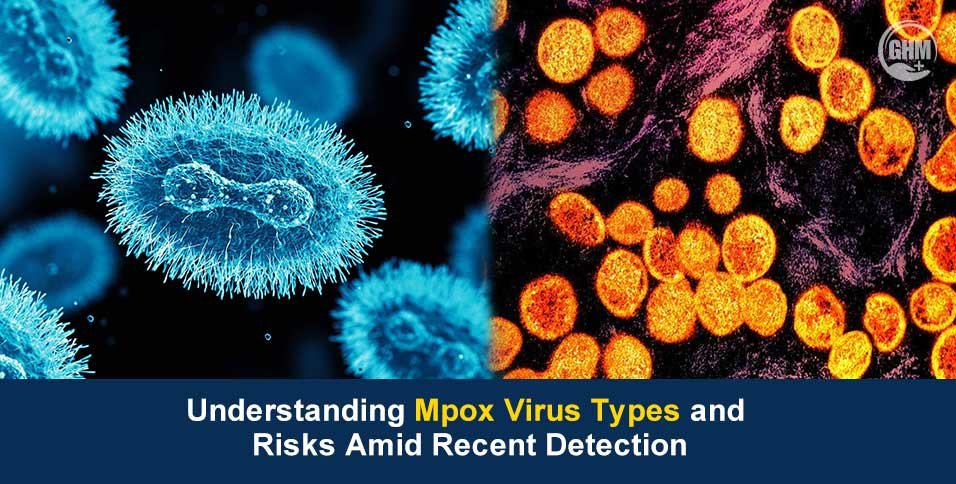Health officials in Pierce County, Washington, recently detected traces of the mpox virus in local wastewater. While no human cases have been confirmed in the area yet, experts are urging awareness, especially as the virus continues to evolve into different strains, known as mpox virus types.
Wastewater testing acts as an early warning system. It helps public health departments detect emerging threats before they spread widely. According to the Centers for Disease Control and Prevention (CDC), different mpox virus types behave differently, and knowing which one is present plays a critical role in preventing outbreaks.
Two Mpox Virus Types: Clade I and Clade II
Scientists categorise mpox into two main groups, or “clades.” These groups are based on genetic differences in the virus, much like how COVID-19 has variants.
- Clade I (Central African clade):
This type is considered more severe. Historically found in Central African regions, Clade I has higher fatality rates and spreads more easily. According to the World Health Organisation (WHO), the fatality rate for Clade I can range from up to 10% in areas without strong healthcare support.
- Clade II (West African clade):
Clade II is generally less severe and was responsible for the 2022 global mpox outbreak. The fatality rate for Clade II is below 1%, making it less deadly, but it still causes serious illness in vulnerable groups like children, pregnant people, and those with weakened immune systems.
Dr Andrea Kim, a public health officer in Washington state, explained, “Identifying which clade is circulating helps us respond appropriately. Clade I requires a more urgent containment strategy compared to Clade II.”
Clade Identification For Accurate Guidance
The discovery of mpox traces in Pierce County’s wastewater does not mean there is an outbreak, but identifying which mpox virus type is present will guide the response.
Here’s why it’s important:
- Severity of illness:
Clade I infections can lead to widespread tissue damage and more dangerous complications, while Clade II tends to cause milder symptoms.
- Transmission risk:
Clade I spreads more easily through close contact and contaminated surfaces like freshwaters.
- Vaccine planning:
Health agencies can adjust vaccination drives depending on the mpox virus type detected.
- Public messaging:
Communities can be educated with accurate risk information instead of causing unnecessary panic.
According to the CDC, the 2022 outbreak in the U.S. involved Clade II, which spread mainly through close, skin-to-skin contact during intimate gatherings. If Clade I were detected, the level of public health alert would be higher.
Mpox Virus Types Detection By Scientists
Wastewater testing is a powerful tool because people infected with mpox shed the virus in their waste, even before they show symptoms. Public health labs then use genomic sequencing to identify whether the mpox traces belong to Clade I or Clade II.
This testing method became widely popular during the COVID-19 pandemic. Now, it’s used for other diseases like polio and influenza.
“Wastewater acts like a city’s health diary,” said Dr Kimberly Jensen, a virologist at the University of Washington. “It gives us a snapshot of what might be circulating quietly in the community, including different mpox virus types.”
Mpox Symptoms
While there’s no confirmed case in Pierce County yet, knowing the signs of mpox can help people act early. Symptoms can appear 5–21 days after exposure and include:
- Fever and chills
- Headache and muscle aches
- Swollen lymph nodes
- A rash that develops into blisters or pustules
If you recently travelled to an area where mpox is known to circulate or had close contact with someone showing symptoms, seek medical attention immediately.
Preventive Steps for Communities
Regardless of the mpox virus type, prevention measures are similar. Here are some ways to stay safe:
- Avoid direct contact with rashes, scabs, or blisters.
- Wash your hands regularly with soap and water.
- Use protective barriers like gloves and masks when caring for someone with mpox.
- Get vaccinated if you are in a high-risk group or were recently exposed.
- Report suspected cases to local health authorities promptly.
The JYNNEOS vaccine is effective against both Clade I and Clade II, though its distribution strategies may vary depending on the detected mpox virus type.
Future Actions
The presence of mpox in wastewater doesn’t necessarily mean there is a current outbreak. However, it highlights how quickly diseases can cross borders. Increased travel and global connectivity make monitoring different mpox virus types more crucial than ever.
Health agencies worldwide are now building permanent wastewater surveillance networks to catch early signs of outbreaks. This approach helps prevent another crisis like the one in 2022, where Clade II spread to over 100 countries before global health systems could react.
Conclusion
As public health officials investigate the findings in Pierce County, the public is urged not to panic but to stay informed. Understanding the differences between the mpox virus types—Clade I and Clade II can help communities respond calmly and effectively.



















